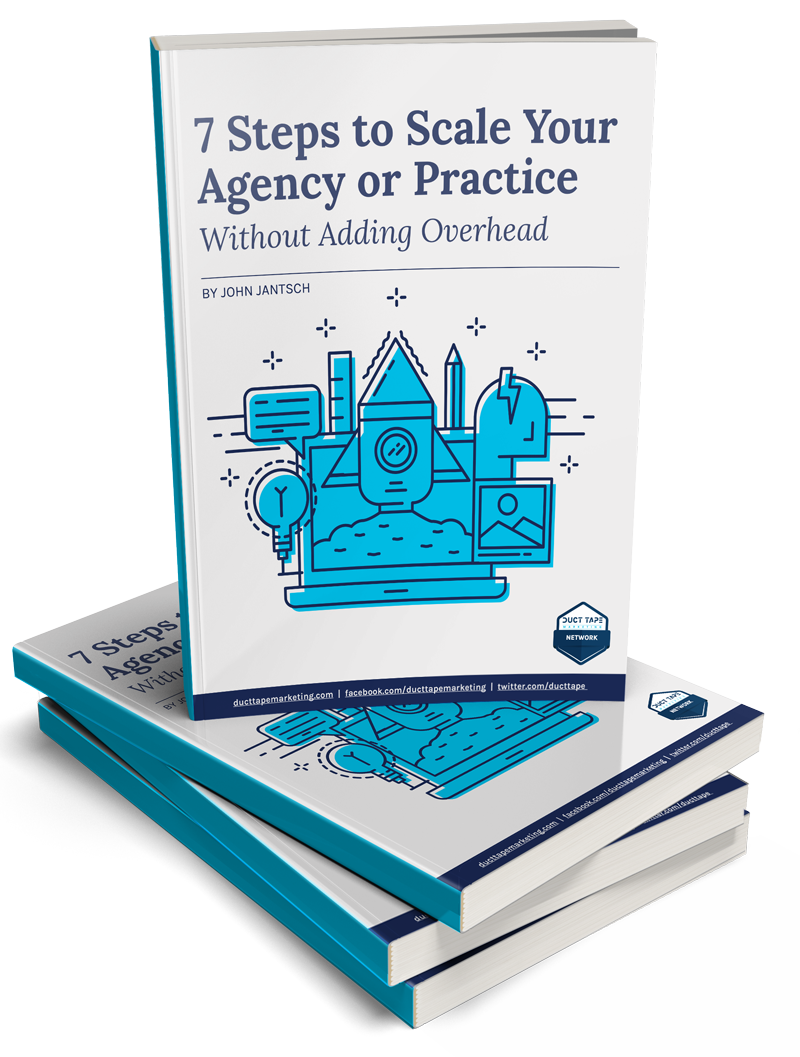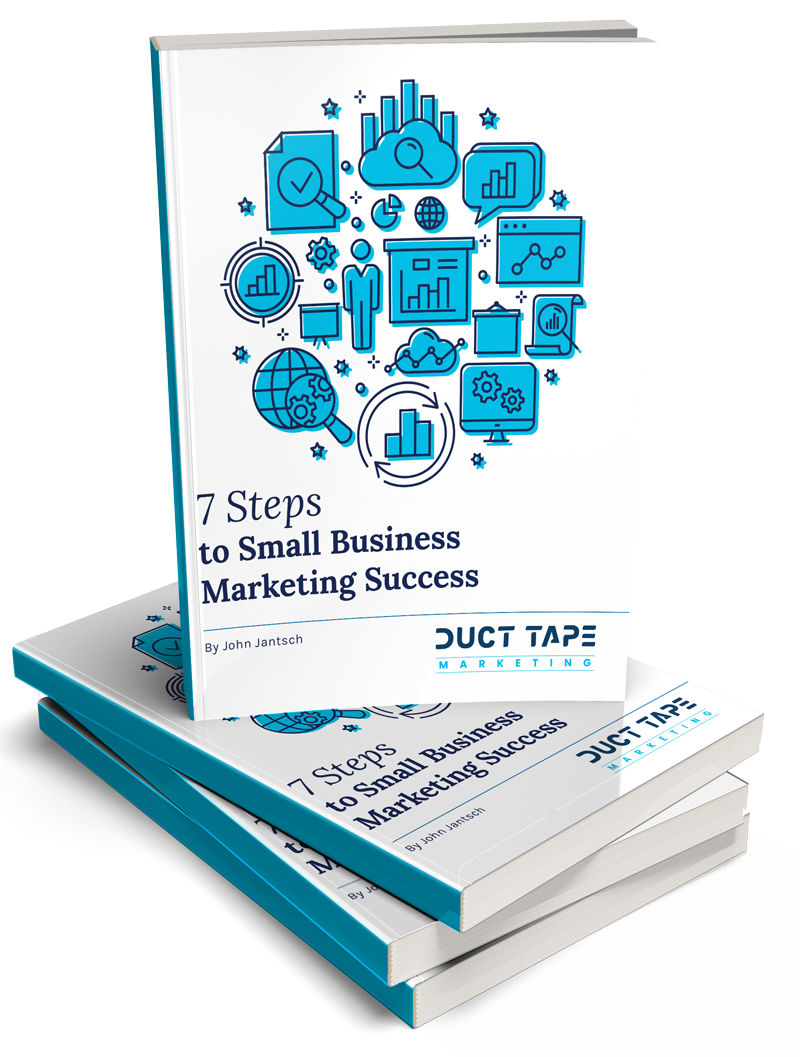Marketing and selling consulting services can take weeks, months, and in some cases — years. As a consultant who must balance delivery versus sales, not having enough leads can lead to the dreaded feast-or-famine cycle.
Nurturing and educating your leads is time-consuming work. You don’t want to nurture and educate leads that go nowhere. This is inefficient for your business — almost as bad as spending dozens of hours on an RFP for a project that you might not even get.
Only a third of B2B businesses follow-up with their leads on a monthly basis.
Can you really blame them?
Following-up consistently takes a tremendous amount of memory. You’re already allocating your brain power to delivering results to your clients!
What if there was a way to nurture, educate, and convert consulting leads into clients — at scale?
It’s common knowledge that every consultant and the consulting firm should have a website. Unfortunately, many consultants do not use their website to generate business results.
A well-designed website for consultants helps converts leads into clients. When used correctly, it can be your most powerful sales tool.
The biggest benefit of an effective consulting website is that it allows you to scale your marketing. As a consultant, you are paid for your work on projects — but you don’t get paid to market yourself. This makes the ability to market yourself at scale critical to your business.
Your website is a member of your team that markets and sells your services. When you’re website does marketing and sales for you, you can focus more on helping your clients.
By the end of this article, you will…
- Learn the 4 steps to turning your website from “digital brochure” to lead-generating machine
- Know how to demonstrate trust and credibility through your website
- Understand the changes you can make to your website today to make it more sales-oriented
When you sell your expertise, you’re not focusing on the “close” or sales tactics. To turn consulting leads into clients, you must educate and nurture your leads until they trust you enough to solve their business problems. Your website can help you do that — quicker, and at scale.
I know what you’re saying.
“Consulting is a relationship business — there’s nothing my website can do for me to help me turn leads into clients!”
You’re right about one thing — Consulting is a relationship business. But your website and digital presence is one key part of starting and developing these relationships.
And a third of professional services buyers have ruled out a firm because of an unimpressive website.
Whether they hear about your business via referral, Google search, a talk you give, etc — the first thing prospects will do before doing business with you is to check out your website.
You can present them with a “brochure” website that’s little more than an online business card (and does nothing to entice them about working with you)…
Or you can design your website in a way that brings them into your sales pipeline, nurtures them, and offers them your services.
The 4 Step Method to Converting Consulting Leads into Clients Online
1. Share what you know
If you’ve spent any time learning about digital strategy, you’ll have heard the term “content marketing.”
For consultants, this means sharing what you know online in a way that educates your prospects. You want this content to be the first step for prospects entering your sales funnel. You create it with the intention of driving customer action.
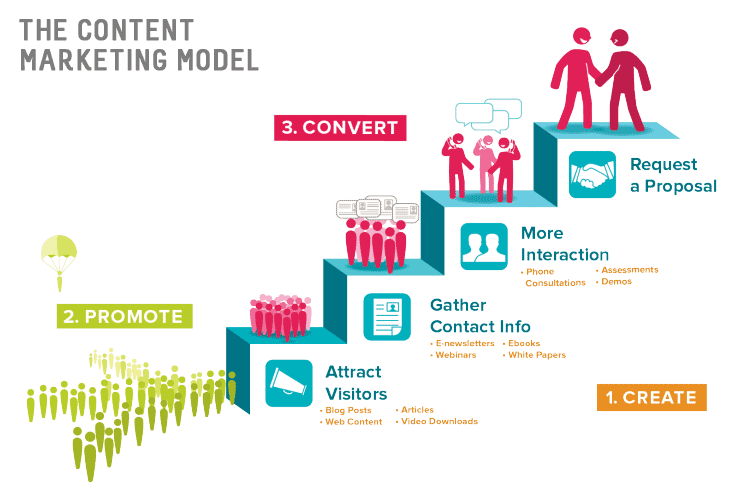
Your website is the perfect tool to publish your content. You own it. Your content isn’t at the risk of any other business model besides your own.
The goal of this content is to demonstrate your credibility, educate your prospects, and gain more visibility. The more places you can do this, the more visibility and traffic you will get.
If you’re not sure on what to write, focus on just “sharing what you know.”
What can you share that will help your prospects achieve a positive result for their business?
It could be…
- Teaching them about how you helped a previous client achieve success
- Demonstrating how your expertise is a fit for their business
- Educating them on a common problem in their industry
Use websites like Medium, Quora, and LinkedIn to repurpose your content. If you don’t get a lot of traffic to your website yet, you can use these platforms to gain initial traction.
Medium allows you to import blog posts straight from your website without penalty.
You can promote your posts on Quora to relevant questions, by giving readers a “preview” of your full answer, and then link them back to your website.

LinkedIn can go either way. You can write original content for your profile, or write shorter posts that link to the full articles on your website.
Personal brand coach Leonard Kim uses all three of these techniques. He posts answers to Quora, imports them into LinkedIn, and then uses them as the blog posts on his website.
Here’s how consistently sharing worked out for consultant and coach Robert Middleton of Action Plan Marketing:
“Since 2002, virtually all of my business has come as a result of my email newsletter and blog. I’ve built a brand, credibility, and trust with tens of thousands of people with this medium. People often ask me how I find content for my writing. It’s easy; it’s all based on problems and challenges my clients have faced.”
Just like Robert, use your past and present clients as inspiration for your content. If you can help your clients, then you can help your prospects who face similar challenges in their business.
2. Create a lead magnet
The only thing that should be free on your website is access to your articles.
All of your whitepapers, eBooks, and email courses should “cost” the readers their name and email address.

Put your best content behind forms. Use your website to give your prospects access to some of your exclusive content in exchange for their contact information.
Your website is not well-designed if it isn’t driving profitable customer action. Your lead magnets are the first step to driving this action and starting a relationship with your leads.
The more value you can pack into your lead magnets, the more qualified leads you will get. If a referral is sent to your website that is interested in your services, your lead magnet will be your first impression. You can start this impression off well by offering value — while many of your competitors talk about themselves on their website.
As a rule of thumb, make your lead magnet worth at least $100 in value to make your business stand out in your industry. This will ensure that you spend the amount of time necessary to create a remarkable resource that your prospects appreciate — one that makes them go “aha!” and teaches them something valuable.
The best thing about your lead magnets? Any modern email marketing service can deliver them automatically. Website visitors can visit your website, sign up for your email list to get your lead magnet, and your email marketing software will send them the resource.
You can even get fancy by offering a multi-day email course, where you “drip” your course to your leads over the series of days or weeks. Once you write it, you have an asset that will market your business for you.
When done right, these lead magnets can be your best marketing tool. They are critical to building a well-designed, effective consulting website.
3. Nurture and follow-up
Nurturing and following up with your leads is the key to getting more work out of your digital presence. Very few consultants actually do this.
The follow-up is where you will win consulting projects.
When it comes to purchases made as a result of receiving a marketing message, email has the highest conversion rate (66%), when compared to social, direct mail and more.
The good news is that this is not hard. Since you’re selling your consulting services, you don’t have to write a new sales page to blast to your list every week.
Instead…
- Let them know what you’re up to and what you’re working on
- Fill them in on client successes
- Encourage them to “hit reply” and ask questions
- Send them quick tips & strategies
- Tell stories that tie into the problems you solve and your services
- Educate them on your areas of expertise
Don’t spend more than an hour sending a few emails to your list a week. Keep them simple, actionable, and focused on fostering interaction. Give your list priority access to schedule a free consultation so you can develop personal relationships with members of your audience.
Unlike someone offering widgets or commodities, you want to encourage interaction with your list. Use your email list as a two-way street. Every email you send should pose a question to your readers and encourage them to respond.
Use a service like Calendy and offer subscribers a 15-minute consultation where you can get to know more about them. This is great for building relationships and will serve as invaluable market research. Talking to your list of leads and listening to their challenges will give you infinite ideas for your articles.
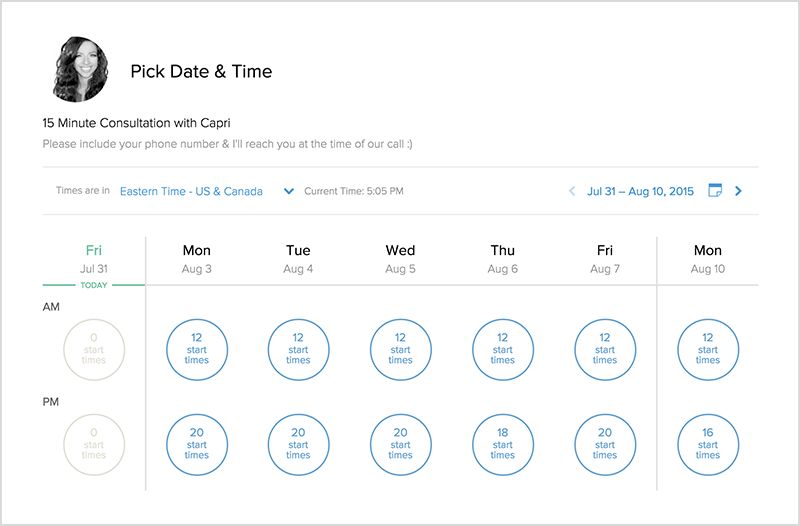
One of the main purposes of your website is to acquire leads and to get visitors on your email list. Once you start acquiring leads, make sure you are consistently reaching out to your list.
4. Offer
You won’t attract new clients through your website if you don’t offer your services.
As you continue to educate and nurture your leads, certain people on your list will trust you enough to hire you for a project.
If you offer productized consulting, even better. Use your list to offer your productized consulting offers, starting with the lowest commitment offer (like a book).
Lead your list up your ladder of offerings, building trust with them as they become customers and clients.
Your email marketing software is ultimately a sales tool — so use it that way. Keep your clients updated on your status, and let them know when you are available for work. These are people that have signed up to learn from you and have gotten to know you and your sense of expertise. They aren’t a list of random names and emails — they are qualified leads!
You don’t have to do any hard selling. You can simply say…
“I’m currently taking on a client. Do you know anyone who needs help with {problem that you solve}?”
Making offers for your products and services in between your educational emails is the final step for converting consulting leads into clients.
Do’s and Don’ts
Do: Create specific offering pages for certain follow-ups
Specific landing pages built for events (a podcast episode you are on, your talk was given at a conference, etc) that offer your listener a piece of content relevant to your talk is a fantastic way to follow-up.
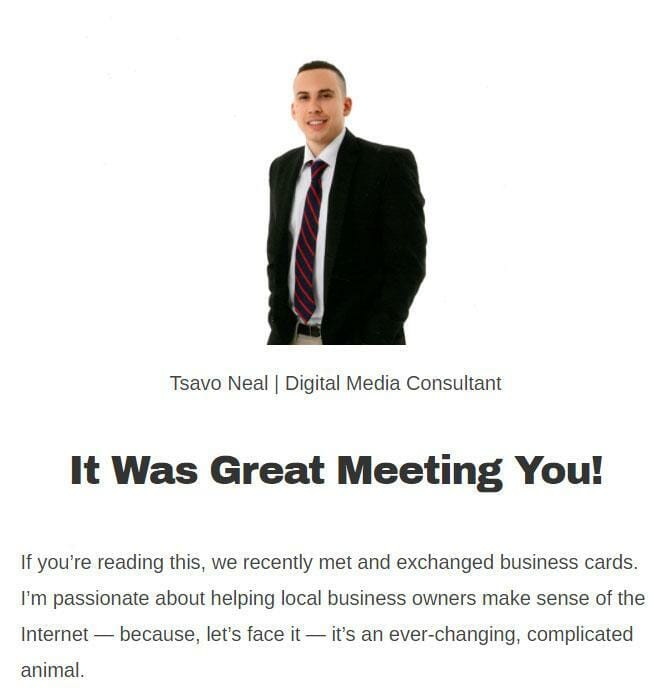
Let’s say you are giving a talk in front of A/E/G manufacturers on how to solve new product manufacturing problems.
Before your talk, build a landing page with an easy to remember URL (www.yourcompany.com/aeg), and write some copy that reminds the listeners of who you are and the problem you solve.
Create a piece of content that “upgrades” your talk (whitepaper, eBook, mini-course, etc), and offer that upgrade when they sign up to your email list.
You can get really fancy by segmenting these subscribers into a certain group, and then build content around them.
Speaking engagements are already one of the top methods for consultants to acquire leads, and building a simple landing page for your speaking engagements is a sure way to maximize every talk that you give.
Don’t: Neglect your design
You can write consistently for your blog, offer lead magnets, and build up an email list — but if the design of your website is outdated or unprofessional, you won’t get far.
94% of first impressions are design-related. People are judging whether your consultancy is trustworthy and credible within milliseconds of landing on your homepage.
Usually, it’s the opposite. Consulting firms will have a beautiful, modern website — but it does absolutely nothing for their business.
Go for both great content and great design for if you want to position yourself as a trusted advisor in your industry.
People prefer reading content that is aesthetically designed. Good design builds trust and positions your firm as approachable and trustworthy.

Action Steps
Can you count the number of leads that your website has given your consulting business the past month?
If you can’t, or it hasn’t brought you any, it’s time to look into building a consulting website that attracts and develops new business.
If you’re like 81.8% of consultancies that lists developing and attracting new business as your top business challenge, then you’re better off getting your website to help shoulder the load.
Converting consulting leads into clients is no cakewalk — and that’s why you should use your website to help.
 About the Author
About the Author
Tsavo Neal helps consultants and consulting firms use their website to attract and develop new business. You can read his collection of blog posts, The Ultimate Guide to Consultant Website Design, where he publishes content on sales-oriented web design for consultants. You can also connect with him on LinkedIn, Twitter, and Quora.


